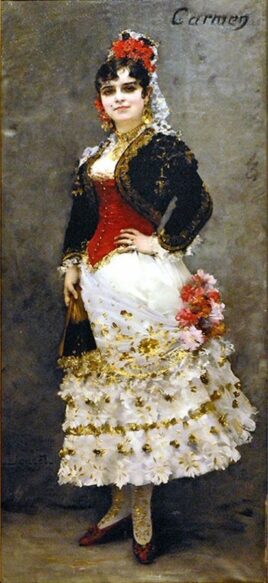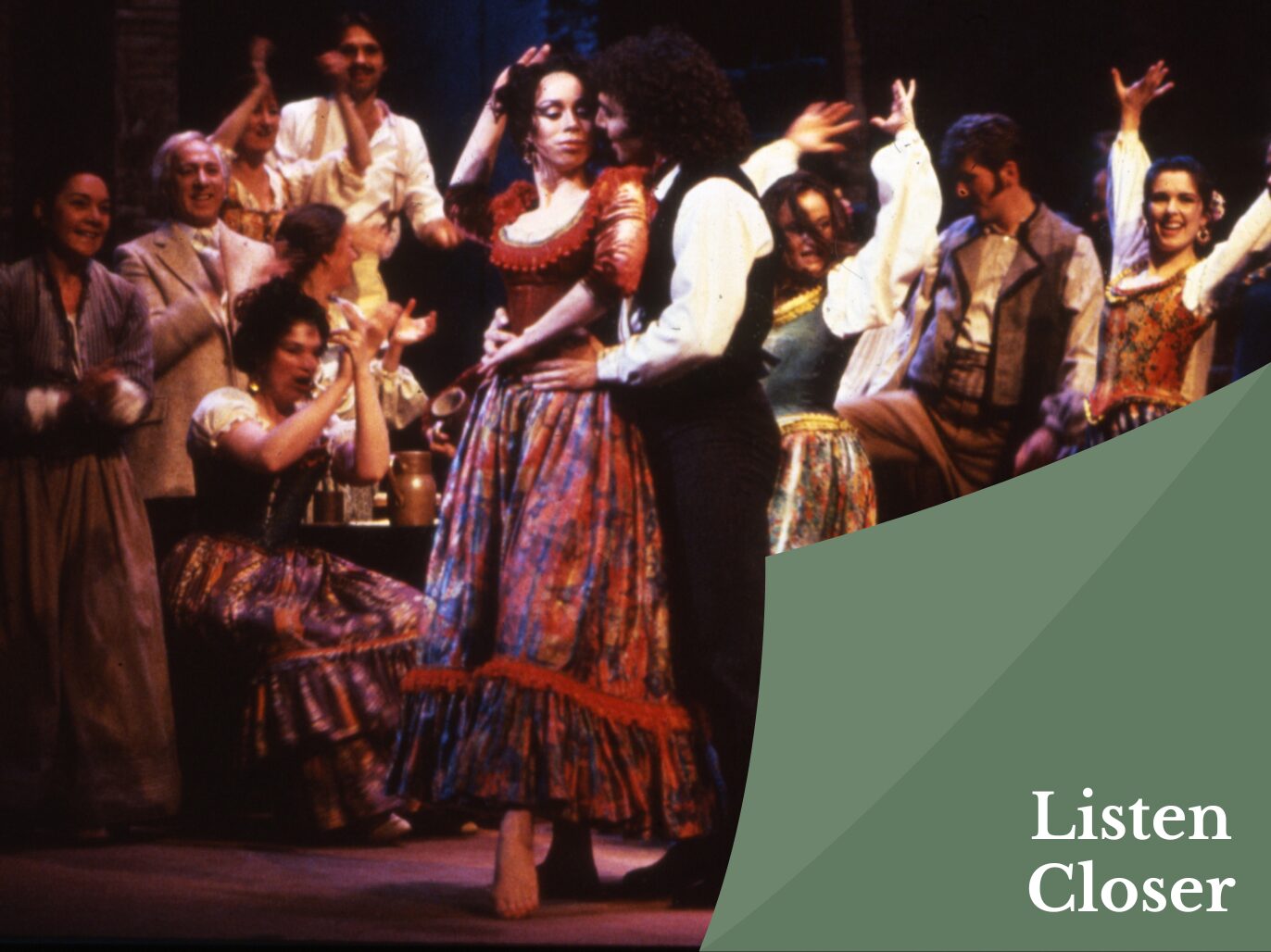Georges Bizet’s opera Carmen would—unbeknownst to him—become his last and most celebrated composition. He left us with a rich and inspired opera that took inspiration from Basque and Hispanic traditional music and gave us a surprisingly modern heroine. His sudden death three months after the premier meant that he would never know that this opera would become a career-defining work. Bizet’s catchy melodies hide a musical depth that merits a deeper listen to this musical masterpiece.
The iconic entrance: Carmen’s first aria
Next time you watch Bizet’s Carmen, pay extra close attention to Carmen’s well-known aria, “L’amour est un oiseau rebelle.” About as close as it gets to a musical blockbuster, Carmen is one of the most frequently performed operas in the repertoire (although it wasn’t always this popular). The aria tops the list in a masterpiece full of memorable melodies.
“L’amour est un oiseau rebelle” marks Carmen’s first appearance in the opera—talk about making an entrance! While the melody is shockingly simple, the result is nothing short of spectacular: starting at the top of her range, she descends chromatically before leaping back up to descend again, and then again. Underneath this sultry descent, Bizet varies the harmonies, veering into both minor and major keys. The sensual fluidity this all creates mirrors Carmen’s flirtatious lyrics: “Love is a rebellious bird / that nobody can tame / and you call him quite in vain / if it suits him not to come.”
If this all feels very exotic for an opera by a Frenchman, that’s because it is—and because it isn’t all 100% Bizet’s handiwork. In order to evoke the opera’s Andalusian setting and its colorful cast of characters, Bizet draws on several tools composers often used to depict far-flung locales like a heavy dose of chromaticism or exotic instruments (here castanets). But he also went straight to the source. Carmen’s dramatic descending melody is actually pulled from a song by Basque composer Sebastián Iradier; Bizet had allegedly mistaken it for a folk tune.

How Bizet’s Habanera Defines an Aria
Of course by the time Carmen even begins to sing, Bizet has already set the stage with another nod to an exotic musical tradition. The first thing we hear is a habanera rhythm, a pattern with origins in Cuba and strong ties to other Spanish-speaking parts of the world. Let’s listen to the first few iterations of the rhythm that the cellos will go on to play over a hundred times (!) before the opera’s close:
The habanera rhythm is the foundation of both a sensual dance and a romantic song, and Bizet’s use of it packs references to centuries of storytelling into just four notes. The rhythm is such an essential part of the aria that it has even become a shorthand for it: one can speak of Carmen‘s “Habanera” just as one can cite the full French title.
So next time you watch Carmen, take a moment to marvel at all the layers working under the slinky surface of this smash-hit aria. Or just let yourself be transported to a nineteenth-century Spanish cigarette factory… or think of the version made famous by The Muppets. Whatever works. Happy listening!

